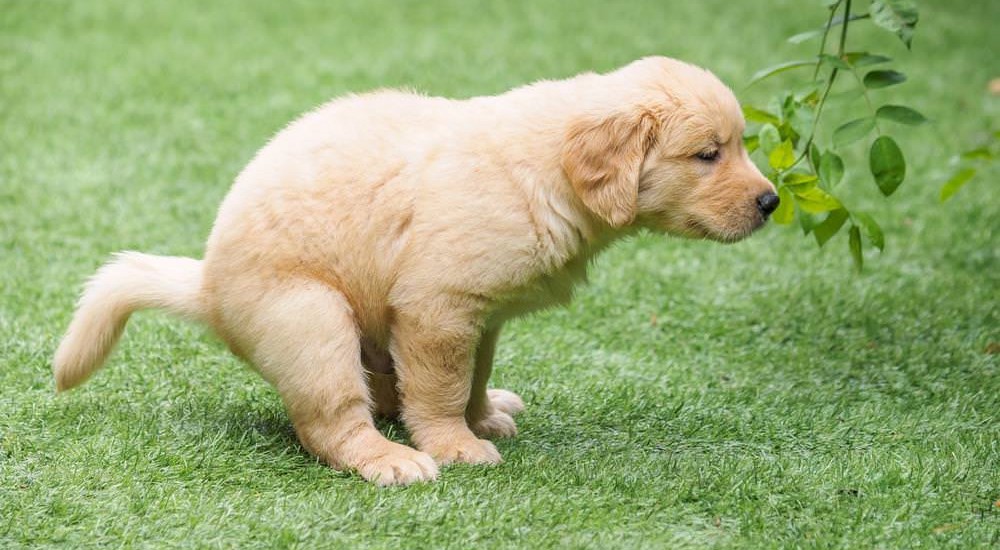Launching a Tesla Roadster into outer space may have mature lesbian sex videos xvideos.combeen ridiculous, but the vehicle is far from being worthless space junk.
The stunt actually served an important engineering purpose.
Engineers commonly load their rockets with heavy simulation cargo -- often made of metal -- so they can accurately test how these expensive launchers will behave as they blast through the skies at some 18,000 miles per hour.
SEE ALSO: Elon Musk's outer space Tesla will overshoot Mars and land somewhere in the asteroid beltElon Musk -- in a somewhat grotesque show of wealth -- decided to send a Tesla in lieu of hunks of metal, called mass models, which are intended to simulate how a load of cargo will act during a rocket's flight.
Scientists: "Space junk is a major problem. The amount of debris in space will triple by 2030. It can destroy satellites and is lethal to people going on future space missions."
— Jared Wall (@JaredWall01) February 7, 2018
Elon Musk: "Word. Hey, watch me shoot this car into space."
"They’re dummy versions of actual satellites," Jonathan McDowell, an astronomer at the Harvard-Smithsonian Center for Astrophysics, said in an interview.
Although Musk sensationalized his cargo simulation, these space-bound loads can also be pretty mundane.
"They're historically made to be simple, easy, boring, and cheap simulations," said Tommy Sanford, director of the Commercial Spaceflight Federation, in an interview.
"They use something like heavy cinder blocks -- it puts the 'dumb' in dummy payload," said Sanford.
 Original image has been replaced. Credit: Mashable
Original image has been replaced. Credit: Mashable These dummy simulations serve two necessary functions.
First, most SpaceX customers, like the U.S government, pay the spaceflight company to launch extremely expensive (in the hundreds of millions of dollars) satellites into space. Accordingly, SpaceX needs to tell satellite-makers how much their gear will bounce around and vibrate during the launch, so the pricy machines are prepared for the intense experience.
"Most of the interesting data comes in the first few minutes, because that's where the ride is pretty rough," said McDowell. "So you can see the experience that your satellite is going to have."
"It's just to prove to future customers that their payload is comfortable," noted Sanford.
Second, rocket companies like SpaceX want to know how the cargo they're blasting into space will affect the rocket.
Cargo is positioned atop the rocket in an area called the "payload fairing." As this stuff vibrates, it can affect the rocket -- and engineers don't want excessive jolting to occur during an already precarious, high-speed operation.
 Original image has been replaced. Credit: Mashable
Original image has been replaced. Credit: Mashable "It's possible for the satellite to feed back into the fairing," said McDowell, who noted that past fairing failures have occurred for this very reason.
Rocket scientists, however, usually have a pretty good idea going into a launch of how their rocket will behave. The launch is often just a confirmation that the rocket works -- and can handle heavy loads.
"The launch is to prove out that ground simulations and computer modeling are correct -- or at least mostly correct," said Sanford.
SpaceX engineers were mostly correct in their launch calculations, which included the weight of the Roadster and the domed-base it sat on. But if SpaceX could allocate resources to attach the Roadster to a platform, surround it with sturdy cameras, and fit the "Starman" mannequin into a spacesuit, it seems likely that could have -- at minimum -- incorporated some scientific value into this simulated cargo-turned-space debris.
With a bit of foresight, the Roadster -- or a far cheaper object -- likely could have been fitted with some data or image-collecting technology that could have been of use to astronomers. After all, any data gathered in space is valuable.
FAQ
— Mika McKinnon (@mikamckinnon) February 8, 2018
Q: Is firing a Tesla into space legal?
A: Yes
Q: Is it just going to keep orbiting forever?
A: Pretty much, yes
Q: Could the car have served a scientific purpose if outfitted differently?
A: Yes
Q: What prevents other billionaires from doing similar launches?
A: Nothing
During a press briefing following the successful launch of the Falcon Heavy, however, Musk said that SpaceX isn't necessarily planning to track the car through its solar system orbit, leaving astronomers to investigate where the Tesla might go.
Elon is still talking about the Starman going to the asteroid belt. But I'm not convinced yet... https://t.co/yoU5fCPHKb
— Jonathan McDowell (@planet4589) February 7, 2018
Then there's the growing problem of space debris. It's typical for any test launch to leave debris in the Earth's orbit.
Rocket launches of all persuasions can create space junk unless they're designed to be brought back down to Earth and crash into the ocean. Or, in SpaceX's case, land on drone ships and be reused.
But when rockets leave this test cargo in space -- like a pile of cinderblocks -- this space debris isn't just haphazardly left to wander around its orbit.
"People could always argue about debris and define it as debris, but when they do those early launches with dummy payload, they make sure they put the dummy payload into a graveyard or inoperable orbit that is not of value to the space community and something that won’t be a threat to future activities in space," said Sanford.
For those concerned about the Tesla Roadster adding to the problem of space litter orbiting Earth, in this case the test cargo has rocketed into deeper space -- far away from Earth's orbit -- meaning that the usual concerns about space debris crowding out Earth's part of space are somewhat unfounded.
The Roadster will orbit the sun, not the Earth, and thus won't add to the thousands of pieces of junk orbiting our planet, such as derelict satellites and tiny screws.
"That doesn’t mean I think it's fine to arbitrarily launch junk out there [into space]," said McDowell. "But it's not a problem in the way that Earth orbital debris is."
There are still valid concerns that human-made objects could impact icy moons around Jupiter and Saturn, possibly disturbing any life that may exist there or even seeding it with our own life. That said, the possibility of that kind of impact is incredibly low.
The cherry red Roadster has already passed the moon, and McDowell estimates that the vehicle will hit its farthest away point from the sun -- somewhere past Mars -- in November 2018.
 Your 'wrong person' texts may be linked to Myanmar warlord
Your 'wrong person' texts may be linked to Myanmar warlord
 Wordle today: The answer and hints for December 4
Wordle today: The answer and hints for December 4
 'Barbie' and 'Oppenheimer' saved cinema, but at the cost of taking it seriously
'Barbie' and 'Oppenheimer' saved cinema, but at the cost of taking it seriously
 Whiting Awards 2019: Vanessa Angélica Villarreal, Poetry
Whiting Awards 2019: Vanessa Angélica Villarreal, Poetry
 Robin Triumphant
Robin Triumphant
 The best internet moments of 2023
The best internet moments of 2023
 The Genius of Terry Southern by David L. Ulin
The Genius of Terry Southern by David L. Ulin
 Whiting Awards 2019: Vanessa Angélica Villarreal, Poetry
Whiting Awards 2019: Vanessa Angélica Villarreal, Poetry
 Isaac Bashevis Singer from Beyond the Grave by Matt Levin
Isaac Bashevis Singer from Beyond the Grave by Matt Levin
 A worthless juicer and a Gipper-branded server
A worthless juicer and a Gipper-branded server
 Every iPhone 16 model may get a new and improved 'Action' button
Every iPhone 16 model may get a new and improved 'Action' button
 A Tribe Called Quest Is Gone, but Hip
A Tribe Called Quest Is Gone, but Hip
 One Word: Avuncular by Myriam Gurba
One Word: Avuncular by Myriam Gurba
 WhatsApp launches 'Advanced Chat Privacy' to protect sensitive conversations
WhatsApp launches 'Advanced Chat Privacy' to protect sensitive conversations
 Redux: There’s No Trouble in Sleeping by The Paris Review
Redux: There’s No Trouble in Sleeping by The Paris Review
 Spotify unveils 'Barbie' Easter egg
Spotify unveils 'Barbie' Easter egg
 The World Association of Ugly People by Rebecca Brill
The World Association of Ugly People by Rebecca Brill
 One Word: Dipshit by Halle Butler
One Word: Dipshit by Halle Butler
KFC creates special Meghan and Harry themed bucket for a kinda cute reasonTesla Model X sets record by towing Boeing Dreamliner down runwaySenior class pulls off a truly awesome senior prankDeadpool crashes iconic movie covers and honestly, they're so much betterJack Dorsey is a 'huge fan' of BitcoinSince the launch of Amazon's Alexa, the name has become less popularAmazon Go cashierWhatsApp update makes group messaging more like SlackAstronaut snaps photo of Hawaii's Kilauea volcano erupting from spaceRavenous black hole eats up the mass of our sun every two daysDon't let new 'Efail' vulnerability put your encrypted mail at riskYanny or Laurel? IT'S TEARING THE INTERNET APART.9 fictional podcasts to binge if you love sciMan slowly tumbles into river in undeniably hilarious footageFacebook transparency report still ignores company's biggest problemsYanny or Laurel? IT'S TEARING THE INTERNET APART.'This Is America' x 'Call Me Maybe' is a meme. Let's talk about that.'WhackAn analysis of James Delos' creepy speech in 'Westworld'The rise and fall of lawn darts Cuteness for Fun and Profit Staff Picks: Lorenzo Chiera, Michael Friedman, Yuknavitch Growing Up With Obsessive The Perfect Symmetry of Shaker Architecture Watch how 6 planets orbit their star in perfect sync We’re Bringing Back Our #ReadEverywhere Contest Stanley Mouse and the Sixties Psych Shona Sanzgiri’s Photos of Havana—An Embarrassment of Riches Practice Safe Selfies, and Other News I Know This Much Is True by Sadie Stein How the WPA Posters Changed Graphic Design Beelzebub's Closeup, and Other News My Mother Called to Ask How Much to Tip on a Haircut... The Treasure Maps of Pamela Singh I Demand Satisfaction, and Other News The Occult Experiments of Borges and Xul Solar Listen: An Archival Interview with Robert Fagles Ladies: For a Good Time, Walk the Streets of London at Night James Salter on His Early Experiences with The Paris Review A 1922 Science Fiction Novel About Grafting Monkey Glands
3.0912s , 10544.1953125 kb
Copyright © 2025 Powered by 【mature lesbian sex videos xvideos.com】,Defense Information Network